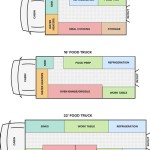
Floor plan financing is a specialized form of financing used by businesses, commonly in the automotive industry, to finance the acquisition of inventory. It provides a way for businesses to purchase inventory without having to pay for it upfront. Instead, the lender, often a bank or financial institution, holds the inventory as collateral and releases it to the business as it is sold.
For example, a car dealership may use floor plan financing to acquire new vehicles from the manufacturer. The dealership does not have to pay for the vehicles upfront, but the lender holds the vehicles as collateral until they are sold. As each vehicle is sold, the dealership pays off a portion of the loan and the lender releases the vehicle to the dealership.
Floor plan financing can be a valuable tool for businesses that need to acquire inventory but do not want to pay for it upfront. It can help businesses to manage their cash flow and to grow their inventory without having to make a large capital investment.
Floor plan financing is a specialized form of financing used by businesses to finance the acquisition of inventory. Here are 9 important points about floor plan financing:
- Secured loan
- Inventory as collateral
- Flexible financing
- Improved cash flow
- Increased inventory
- Reduced risk
- Professional expertise
- Tax benefits
- Industry-specific
Floor plan financing can be a valuable tool for businesses that need to acquire inventory but do not want to pay for it upfront. It can help businesses to manage their cash flow, increase their inventory, and reduce their risk.
Secured loan
Floor plan financing is a secured loan, which means that it is backed by collateral. The collateral for a floor plan loan is the inventory that is being financed. The lender has a security interest in the inventory, which gives the lender the right to seize and sell the inventory if the borrower defaults on the loan.
The security interest in the inventory is typically perfected by filing a UCC-1 financing statement. A UCC-1 financing statement is a public notice that the lender has a security interest in the inventory. This helps to protect the lender’s interest in the inventory if the borrower files for bankruptcy or if the inventory is sold to a third party.
The terms of the security agreement will vary depending on the lender and the borrower. However, the security agreement will typically give the lender the right to inspect the inventory, to require the borrower to maintain insurance on the inventory, and to repossess the inventory if the borrower defaults on the loan.
Floor plan financing can be a valuable tool for businesses that need to acquire inventory but do not want to pay for it upfront. However, it is important to understand that floor plan financing is a secured loan and that the lender has a security interest in the inventory. This means that the borrower could lose the inventory if they default on the loan.
Inventory as collateral
When a business takes out a floor plan loan, the inventory that is being financed serves as collateral for the loan. This means that the lender has a security interest in the inventory. If the business defaults on the loan, the lender can seize and sell the inventory to recoup its losses.
The lender’s security interest in the inventory is typically perfected by filing a UCC-1 financing statement. A UCC-1 financing statement is a public notice that the lender has a security interest in the inventory. This helps to protect the lender’s interest in the inventory if the business files for bankruptcy or if the inventory is sold to a third party.
The terms of the security agreement will vary depending on the lender and the business. However, the security agreement will typically give the lender the right to inspect the inventory, to require the business to maintain insurance on the inventory, and to repossess the inventory if the business defaults on the loan.
Floor plan financing can be a valuable tool for businesses that need to acquire inventory but do not want to pay for it upfront. However, it is important to understand that floor plan financing is a secured loan and that the lender has a security interest in the inventory. This means that the business could lose the inventory if it defaults on the loan.
In addition, the lender may require the business to maintain a certain level of inventory. This is to ensure that the lender has sufficient collateral to cover the loan amount in the event of a default.
The lender may also require the business to provide periodic financial statements. This is to ensure that the business is financially sound and that it is able to repay the loan.
Flexible financing
Floor plan financing is a flexible financing option that can be tailored to the needs of the business. The lender and the business can negotiate the terms of the loan, including the interest rate, the loan amount, and the repayment schedule.
- Loan amount
The loan amount can be based on the value of the inventory or on the business’s creditworthiness. The lender will typically require the business to provide financial statements and other documentation to support the loan application.
- Interest rate
The interest rate on a floor plan loan is typically higher than the interest rate on a traditional business loan. This is because floor plan financing is a secured loan and the lender is taking on more risk.
- Repayment schedule
The repayment schedule for a floor plan loan is typically flexible. The business can make payments on a monthly, quarterly, or annual basis. The lender may also allow the business to skip payments during slow sales periods.
- Balloon payment
Some floor plan loans require the business to make a balloon payment at the end of the loan term. A balloon payment is a large, one-time payment that can be equal to a significant portion of the loan amount.
Floor plan financing can be a valuable tool for businesses that need to acquire inventory but do not want to pay for it upfront. The flexible financing options allow businesses to tailor the loan to their specific needs.
Improved cash flow
Floor plan financing can help businesses to improve their cash flow by allowing them to acquire inventory without having to pay for it upfront. This can free up cash that can be used to cover other expenses, such as payroll, marketing, and rent.
- Reduced upfront costs
Floor plan financing allows businesses to acquire inventory without having to pay for it upfront. This can reduce the upfront costs of starting or growing a business.
- Increased sales
Having more inventory on hand can help businesses to increase sales. This is because customers are more likely to purchase items that are in stock.
- Improved customer satisfaction
Increased sales can lead to improved customer satisfaction. This is because customers are more likely to be satisfied with a business that has the products they want in stock.
- Reduced risk
Floor plan financing can help businesses to reduce their risk. This is because the lender is taking on the risk of the inventory. If the business is unable to sell the inventory, the lender is the one who will lose money.
Floor plan financing can be a valuable tool for businesses that need to acquire inventory but do not want to pay for it upfront. It can help businesses to improve their cash flow, increase sales, and reduce their risk.
Increased inventory
Floor plan financing can help businesses to increase their inventory. This can be beneficial for a number of reasons.
- Increased sales
Having more inventory on hand can help businesses to increase sales. This is because customers are more likely to purchase items that are in stock. For example, a car dealership that has a large inventory of vehicles is more likely to sell more cars than a dealership that has a small inventory.
- Improved customer satisfaction
Increased sales can lead to improved customer satisfaction. This is because customers are more likely to be satisfied with a business that has the products they want in stock. For example, a customer who is looking for a specific type of car is more likely to be satisfied with a dealership that has that car in stock than a dealership that does not.
- Reduced risk
Floor plan financing can help businesses to reduce their risk. This is because the lender is taking on the risk of the inventory. If the business is unable to sell the inventory, the lender is the one who will lose money. For example, if a car dealership is unable to sell a car, the lender is the one who will lose the money that was loaned to the dealership to purchase the car.
- Increased profits
Increased sales and improved customer satisfaction can lead to increased profits. This is because businesses can charge more for items that are in high demand. For example, a car dealership that has a large inventory of vehicles can charge more for its vehicles than a dealership that has a small inventory.
Floor plan financing can be a valuable tool for businesses that need to acquire inventory but do not want to pay for it upfront. It can help businesses to increase their sales, improve customer satisfaction, reduce their risk, and increase their profits.
Reduced risk
Floor plan financing can help businesses to reduce their risk in a number of ways.
- Lender takes on the risk
With floor plan financing, the lender is taking on the risk of the inventory. This means that if the business is unable to sell the inventory, the lender is the one who will lose money. This can be a major benefit for businesses, as it reduces their financial risk.
- Protection against loss
Floor plan financing can also help businesses to protect themselves against loss. This is because the inventory is collateral for the loan. If the business defaults on the loan, the lender can seize and sell the inventory to recoup its losses. This can help to protect the business’s other assets.
- Improved cash flow
Floor plan financing can help businesses to improve their cash flow. This is because businesses do not have to pay for the inventory upfront. This can free up cash that can be used to cover other expenses, such as payroll, marketing, and rent. Improved cash flow can help businesses to avoid financial difficulties and to stay afloat during tough times.
- Increased flexibility
Floor plan financing can also provide businesses with increased flexibility. This is because businesses can typically negotiate the terms of the loan to meet their specific needs. For example, businesses can negotiate the interest rate, the loan amount, and the repayment schedule. This flexibility can help businesses to manage their finances more effectively.
Overall, floor plan financing can be a valuable tool for businesses that need to acquire inventory but do not want to pay for it upfront. It can help businesses to reduce their risk, protect themselves against loss, improve their cash flow, and increase their flexibility.
Professional expertise
Floor plan financing is a complex type of financing that requires specialized knowledge and expertise. Lenders who offer floor plan financing typically have a team of experts who can help businesses to structure the loan and to manage the inventory. These experts can provide advice on a variety of topics, including:
- Inventory management
Lenders can help businesses to develop and implement an effective inventory management system. This system can help businesses to track their inventory levels, to identify slow-moving items, and to optimize their inventory turnover.
- Loan structuring
Lenders can help businesses to structure the loan to meet their specific needs. This includes negotiating the interest rate, the loan amount, and the repayment schedule. Lenders can also provide advice on the different types of floor plan financing available and on the pros and cons of each type.
- Risk management
Lenders can help businesses to identify and manage the risks associated with floor plan financing. This includes the risk of loss due to theft, damage, or obsolescence. Lenders can also provide advice on insurance and other risk management strategies.
- Financial analysis
Lenders can help businesses to analyze their financial statements and to develop financial projections. This information can be used to assess the business’s ability to repay the loan and to identify potential financial risks.
The professional expertise of lenders can be a valuable asset to businesses that are considering floor plan financing. Lenders can help businesses to structure the loan, to manage the inventory, and to mitigate the risks. This can help businesses to make the most of floor plan financing and to achieve their business goals.
Tax benefits
Floor plan financing can also provide businesses with a number of tax benefits. These benefits can help businesses to reduce their tax liability and to improve their cash flow.
- Interest deductibility
The interest on a floor plan loan is typically tax deductible. This means that businesses can reduce their taxable income by the amount of interest they pay on the loan. This can result in significant tax savings, especially for businesses that have a large amount of inventory.
- Inventory valuation
Businesses can use the lower of cost or market method to value their inventory for tax purposes. This means that businesses can reduce their taxable income by valuing their inventory at the lower of its cost or its market value. Floor plan financing can help businesses to reduce their inventory valuation by providing them with access to inventory at a lower cost.
- Bad debt deduction
Businesses can deduct bad debts from their taxable income. A bad debt is a debt that is owed to the business that is unlikely to be collected. Floor plan financing can help businesses to reduce their bad debt expense by providing them with recourse against the lender in the event that the business is unable to collect on a debt.
- Sales tax deferral
Businesses can defer paying sales tax on inventory that is financed under a floor plan loan. This can result in significant cash flow savings, especially for businesses that have a large amount of inventory.
The tax benefits of floor plan financing can be significant. Businesses that are considering floor plan financing should consult with a tax advisor to learn more about the specific tax benefits that may be available to them.
Industry-specific
Floor plan financing is a common financing option for businesses in a variety of industries. However, it is particularly well-suited for businesses in the following industries:
- Automotive
Floor plan financing is a common financing option for car dealerships. This is because car dealerships typically have a large amount of inventory that they need to finance. Floor plan financing allows car dealerships to acquire inventory without having to pay for it upfront. This can free up cash that can be used to cover other expenses, such as payroll, marketing, and rent.
- Electronics
Floor plan financing is also a common financing option for electronics retailers. This is because electronics retailers typically have a large amount of inventory that they need to finance. Floor plan financing allows electronics retailers to acquire inventory without having to pay for it upfront. This can free up cash that can be used to cover other expenses, such as payroll, marketing, and rent.
- Furniture
Floor plan financing is also a common financing option for furniture retailers. This is because furniture retailers typically have a large amount of inventory that they need to finance. Floor plan financing allows furniture retailers to acquire inventory without having to pay for it upfront. This can free up cash that can be used to cover other expenses, such as payroll, marketing, and rent.
- Jewelry
Floor plan financing is also a common financing option for jewelry retailers. This is because jewelry retailers typically have a large amount of inventory that they need to finance. Floor plan financing allows jewelry retailers to acquire inventory without having to pay for it upfront. This can free up cash that can be used to cover other expenses, such as payroll, marketing, and rent.
These are just a few of the industries that can benefit from floor plan financing. If your business has a large amount of inventory that it needs to finance, floor plan financing may be a good option for you.









Related Posts







